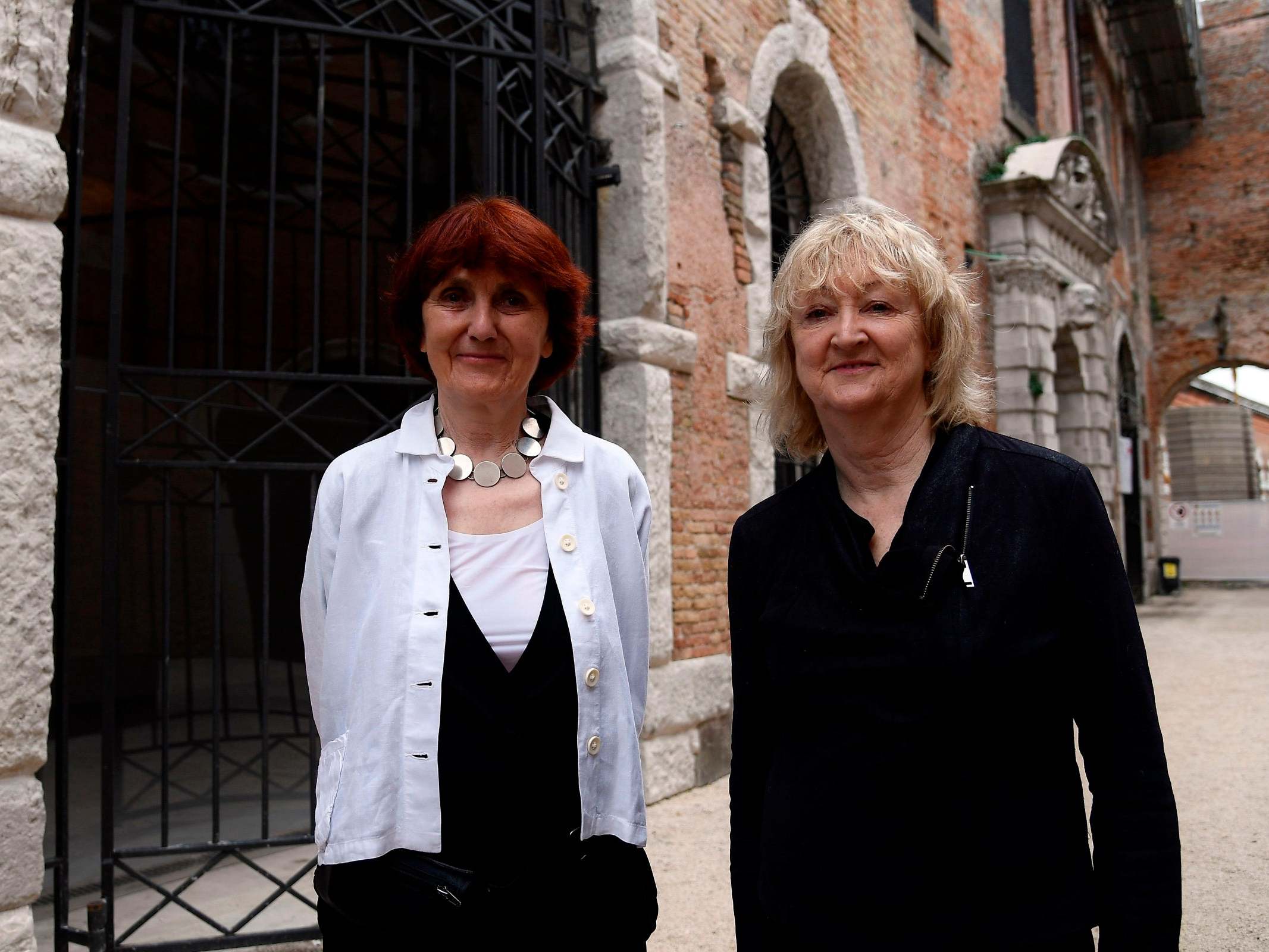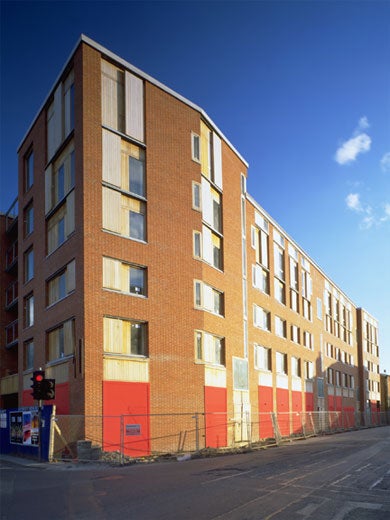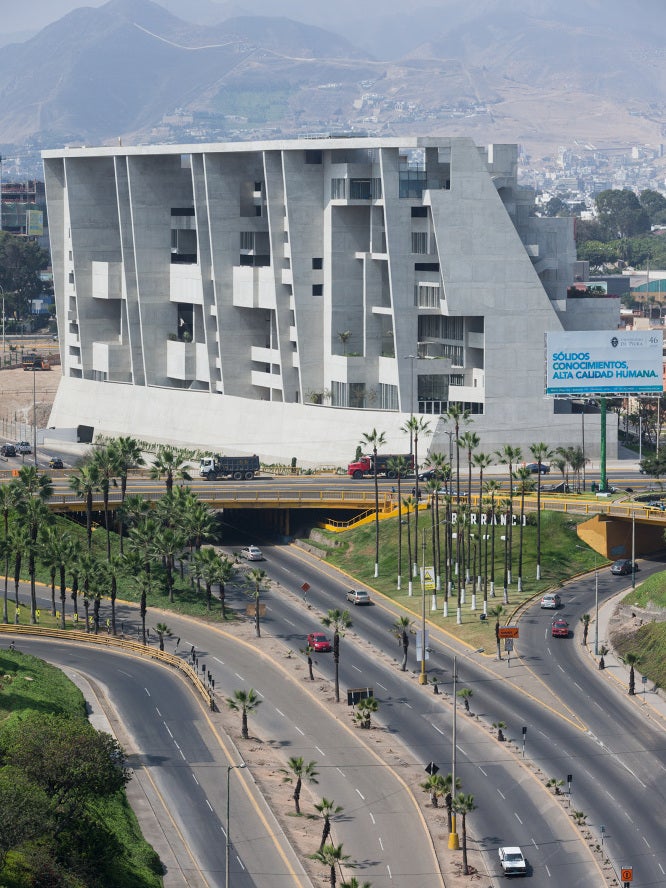Meet the Dublin duo awarded architecture’s highest honour
A sensitivity to nature and focus on collaboration has led Yvonne Farrell and Shelley McNamara to the top of the male-dominated field

When designing a campus for a new University of Engineering and Technology in Lima, Peru, the Dublin-based architects Yvonne Farrell and Shelley McNamara thought deeply about how to integrate the wind and the rain.
It is because of that sensitivity to the natural elements, as well as qualities like their emphasis on collaboration, that the pair were selected to receive the 2020 Pritzker Prize this week, making them the first two women to share the profession’s highest honour.
“Their approach to architecture is always honest, revealing an understanding of the processes of design and construction from large-scale structures to the smallest details,” the jury’s citation said. “It is often in these details, especially in buildings with modest budgets, where a big impact can be felt.”
“Pioneers in a field that has traditionally been and still is a male-dominated profession,” the citation added, “they are also beacons to other women as they forge their exemplary professional path.”
Farrell and McNamara say they have not sought the kind of public recognition the prize represents. They prefer to be known for “a way of thinking and a set of values”, McNamara says, rather than for some kind of identifiable design signature.

“We’re not afraid of monumentality and making important gestures when necessary, but we’re also not afraid to recede and be in the background,” she says. “We think about a heroic space and at the same time think about how a human being feels in our space. We think about our agenda as being a humanist agenda, and that’s at the forefront.”
This attention to the human experience is apparent in projects like North King Street Housing (Dublin, 2000), where an inner courtyard offers “a welcome respite from the adjacent busy streets”, the Pritzker jury said. Similarly, their Urban Institute of Ireland (Dublin, 2002) “employs what the architects call a ‘crafted skin’,” the jury said, “to create a visually interesting building through changes in materials responding to openings, folds, needs for shade and other concerns.”
Farrell and McNamara say that the human experience of what it’s like to move through, walk by and inhabit their buildings is of paramount importance to them.
Architecture is the silent language that speaks. We’re really saying that, when people need something, they don’t just need a building that will keep the rain out
“There are so many buildings you visit and you really admire but there is something missing,” McNamara says. “Architecture isn’t just about design and sophistication and accomplishment, but it’s also about how it makes you feel as a stranger.”
The architects say they also try to be keenly mindful of the physical demands of a building and a site, to design for a specific set of requirements, whether they are planning a generous quadrangle for a business school in Paris or a building that serves as a porous gateway to the London School of Economics.
“Each project is both beginning again and continuing,” Farrell says. “We’re like inventors of space. We use the term, ‘the physics of culture’. Architecture is responding not only to physical need but also to its location on Earth.”

“Architecture is the silent language that speaks,” she adds. “We’re really saying that, when people need something, they don’t just need a building that will keep the rain out. They need something we need to find expression for.”
The two have practiced together for 40 years, meeting at University College Dublin in 1974 and helping to found their firm, Grafton Architects, in Dublin in 1978. Their collaborative approach was evident in their curation of the 2018 Venice Architecture Biennale, which they called “Freespace” and defined as “a generosity of spirit and a sense of humanity at the core of architecture’s agenda”.
“We are interested in going beyond the visual, emphasising the role of architecture in the choreography of daily life,” the team said in their Biennale announcement. “We see the Earth as client. This brings with it long-lasting responsibilities.”
The firm, which has a staff of 38, won the inaugural RIBA International Prize for its University of Engineering and Technology, known as UTEC building in Peru, a vertical campus of open and enclosed spaces that the judges called a “modern-day Machu Picchu”.
The architects say they had, indeed, been inspired by Machu Picchu, in particular its stacked terraces and stones that meld into one another like cushions. “We find cues in local examples,” Farrell says, “like architectural detectives.”
While they have received their share of accolades (like the Silver Lion Award at the 2012 Venice Architecture Biennale), the pair consider the anointing of starchitects misguided. “There are people whose work should be more recognised sometimes,” Farrell says. “The media goes for the easy thing – eye candy. Architecture is much more. It infiltrates our lives in a much deeper way.”
“It’s important to remember that the Earth is beautiful and sunlight is liquid gold,” she adds. “A lot of architecture excludes natural phenomena – the rising and setting sun, the power of springtime moving up through the soil.”
© New York Times
Join our commenting forum
Join thought-provoking conversations, follow other Independent readers and see their replies
Comments